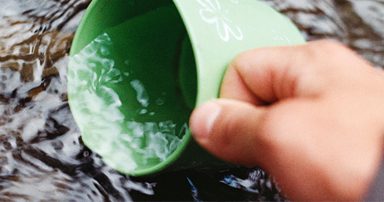[Eva] We had a guest over from Romania. He knew right away my garlic plants were garlic. Oh I had so much to ask him but he wasn’t here for long. He was telling me a bit, just a bit of how they fertilized the soil when their country was taken over by the communists. They used wood ash but also something with watering cut wood bark but I didn’t get it all as others wanted to talk to him. Ugh! Tough having an interesting guest that everyone wants to talk to.
[Mick] Eva, regarding fertilizing plants when you can’t buy fertilizer: There are lots of things that can be done for free. For instance, if you grow comfrey, it can be made into a “tea” by rough-chopping the leaves and putting them into a 5-gallon bucket that you then fill with water. Put the lid on, and let it sit for maybe 3 weeks. Pour off the liquid and compost the leaves. The liquid can be diluted (maybe one part “tea” to 9 parts water) and used for watering any plants that need fertilizer. If you don’t grow comfrey, then there are lots of other weeds that can be made into a fertilizer tea… thistles, dandelion, plantain, and nettles come to mind. For a high-nitrogen fertilizer for plants that are heavy feeders, one might consider an idea that Carol Deppe discusses in her book “The Resilient Gardener” (which is a book that the national Sustainability team has discussed, I think): dilute human urine. One would use the first urine of the morning, diluted one part urine to 10 parts water. According to the book, the urine-water mixture should be used as soon as possible after the urine is collected.
[Jacob] Urine mixed with wood ash makes a pretty good fertilizer as well. The only issue is long term use will increase the salinity of soil. It would be an every 3rd year sort of application for high nutrient need crops with compost in between. Coffee grounds are a good nitrogen source too but they will acidify soil so mixing with egg shells or wood ash is a good plan.
[Eva] We had a guest over from Romania. He knew right away my garlic plants were garlic. Oh I had so much to ask him but he wasn’t here for long. He was telling me a bit, just a bit of how they fertilized the soil when their country was taken over by the communists. They used wood ash but also something with watering cut wood bark but I didn’t get it all as others wanted to talk to him. Ugh! Tough having an interesting guest that everyone wants to talk to.
[Mick] Eva, regarding fertilizing plants when you can’t buy fertilizer: There are lots of things that can be done for free. For instance, if you grow comfrey, it can be made into a “tea” by rough-chopping the leaves and putting them into a 5-gallon bucket that you then fill with water. Put the lid on, and let it sit for maybe 3 weeks. Pour off the liquid and compost the leaves. The liquid can be diluted (maybe one part “tea” to 9 parts water) and used for watering any plants that need fertilizer. If you don’t grow comfrey, then there are lots of other weeds that can be made into a fertilizer tea… thistles, dandelion, plantain, and nettles come to mind. For a high-nitrogen fertilizer for plants that are heavy feeders, one might consider an idea that Carol Deppe discusses in her book “The Resilient Gardener” (which is a book that the national Sustainability team has discussed, I think): dilute human urine. One would use the first urine of the morning, diluted one part urine to 10 parts water. According to the book, the urine-water mixture should be used as soon as possible after the urine is collected.
[Jacob] Urine mixed with wood ash makes a pretty good fertilizer as well. The only issue is long term use will increase the salinity of soil. It would be an every 3rd year sort of application for high nutrient need crops with compost in between. Coffee grounds are a good nitrogen source too but they will acidify soil so mixing with egg shells or wood ash is a good plan.
[Cathy] I buy 30% vinegar by the gallon from Lowe’s. It’s sold in the cleaner section. In an old (well rinsed) Windex spray bottle, I add about an 1/8 of a cup of plain table salt and about 2 teaspoons of blue Dawn. Fill the rest of the bottle up with the vinegar and gently shake to combine. I spray that on plants in the morning when I know it’s not going to rain. It’s even taken care of a patch of mint that suddenly popped up in the middle of my flower beds. You do have to be careful not to spray anything that you want to keep.
[Karen] Do you know if it destroys the soil? I have wild grasses growing in my flower beds and it’s almost impossible to get it out? This would be great as long as it doesn’t “salt” the soil so I can’t plant anything else.
[Cathy] The vinegar and Dawn should not harm the soil. I’m not sure if the salt is a snall enough amount to not have an impact on the soil.
























0 Comments